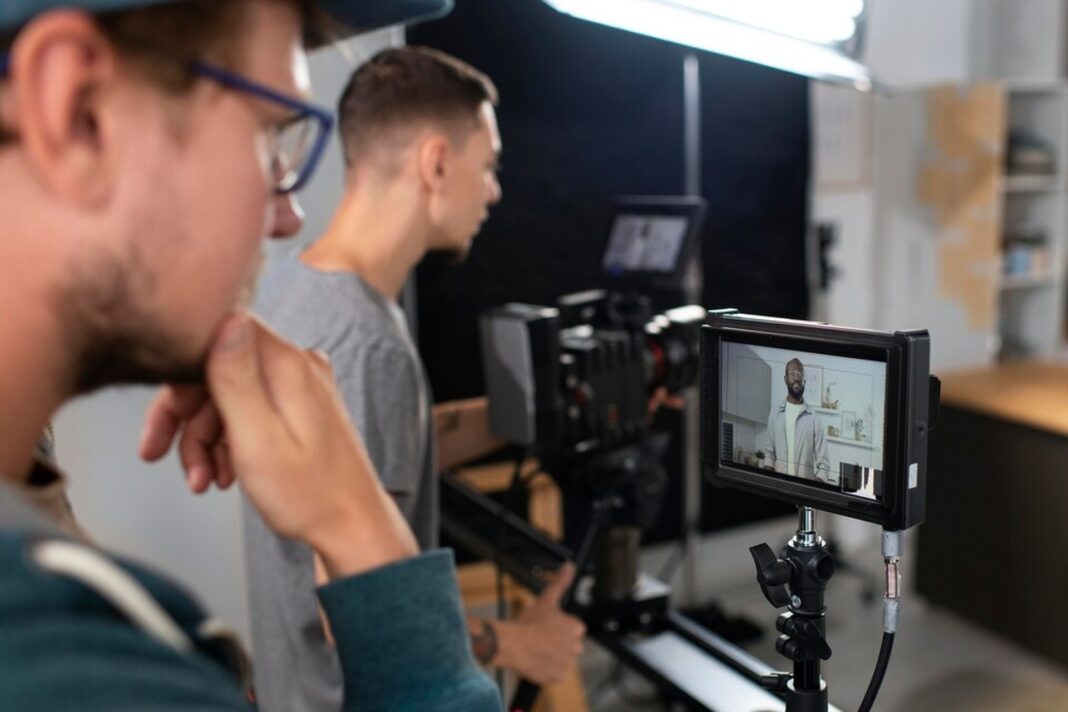Film curation is art and science. Curators meticulously choose films for festivals, exhibits and screenings. Understanding movie audience preferences and cultural relevance is essential for this pick. A good film curator examines aesthetics themes and audience emotion. The process of turning a screenplay into a stunning film requires analysis, creativity and teamwork.
The Art Of Film Selection
Film selection goes beyond appearance. Curators consider narrative visual flair and cultural significance. They assess the film audience effect. Popular films and lesser known classics must be balanced. Curators value varied perspectives. They provide several genres and styles for a balanced program. Important factors include societal topics, historical settings and representation.
Curators must also know industry trends. They must know what viewers like while promoting unknown filmmakers. A film aesthetics and thought provoking abilities are crucial. Curators view many films to find gems for debate. Films may spark debate and challenge conventions via imaginative programming. Filmmakers and consumers value curation at film festivals.
From Script To Screen: The Curatorial Journey
From writing to screen is a complicated process. Curators begin with script study examining narrative and theme. This helps assess the film audience appeal. Curators help filmmakers realize their visions. They help refine concepts and identify barriers.
After screening curatorial work continues. They prepare subjects and schedule and organize talks. Film curators create a coherent experience. This event features filmmaker networking panel talks and QAs. Audience engagement boosts cinematic effect. Each show may spark discussion, stimulate artists and increase art appreciation.
Curatorial work involves sustaining connections. Curators network with filmmakers, publicists and industry pros. Networking encourages cooperation. They aim to celebrate movies and promote new talent. The collaboration improves screenings and raises audience awareness of cinema as art.
Diversity In Film Programming
Diverse cinema programming benefits culture. Increases the variety of tales shared and experienced. Curators favor diverse films from different cultures, backgrounds and viewpoints. This honors underrepresented voices. Gender, ethnicity and socioeconomic problems must be represented.
By going outside the conventional film curators tell global tales. These stories may dispel misconceptions and inspire empathy. Diverse programming promotes cultural knowledge and critical thinking. It challenges cinematic norms. This strategy draws more people making screenings more lively.
Inclusive programming is difficult. Curators must overcome restricted film and resource access. Traditional cinema institutions that favor established directors may oppose them. Determination and inventiveness are needed to overcome these challenges. Collaborations with independent filmmakers and grassroots groups may expand film selection. Curators benefit audiences and filmmaking by promoting diversity.
Collaborating With Filmmakers
Curators and filmmakers must collaborate for programming success. Curators link audiences to stories. Their collaboration boosts the film festival prominence. Curators help filmmakers get exposure. Curators look to filmmakers for authenticity and new views.
Curators typically provide editorial criticism. The cooperation may help filmmakers improve their vision. Discussions regarding ideas, characters and audiences deepen knowledge. Curators help filmmakers create intriguing stories by teaching audience dynamics.
These partnerships go beyond screening. Both sides may make industry contacts via networking. Film festivals provide a venue for identifying new talents. This partnership builds the film industry community. Sharing information and resources benefits everyone.
The Role Of Film Festivals
Film festivals are crucial to the business. Exhibition platforms for filmmakers and curators. Large scale festivals encourage art culture and storytelling. Diverse films, debates and workshops are shown. The passion for film unites creators, distributors and viewers at each festival.
Festivals also find fresh talent. Many new filmmakers are discovered during these events. Curators strive to promote innovation and originality in their lineups. Screenings provide filmmakers with input. This connection may influence future developments.
Film festivals boost the local economy. They bring tourists helping local businesses. Highlighting an area may boost tourism. Festivals promote cultural understanding and community involvement. Beyond screening films they generate lasting memories.
Film Rights And Licenses
Film rights and licensing are crucial to curating yet complicated. Curators must comprehend cinema exhibition law. Filmmakers and distributors get paid via licensing. It safeguards their work and IP. Rights demand cautious discussion and clear communication.
Curators often collaborate with legal teams to ease this process. Finding the right film licensing is key. Public performance rights and distribution agreements. Especially for vintage or overseas films specific permits may be needed. Film origin affects licensing information.
Curators also face issues while seeking rare films. Independent films may have rights issues. Rights knowledge may make or destroy a film program. Curators simplify these steps. They cooperate with producers and distributors to streamline screening. Film and festival integrity depends on efficient navigation.
Trends In Contemporary Cinema
The modern film has evolved. Trends influence filmmakers and viewers. Streaming services have transformed film distribution and consumption. The genres and presentation of films change with this transformation. Film genres are merging. Hybrid forms create new narratives by mixing genres.
Politics and social problems often dominate. Cinema is increasingly addressing global issues. Audiences care about the environment, justice and equality. The growth of personal narrative is invigorating. Personal stories inspire empathy and understanding.
Technological advances are important. VR AR and interactive storytelling create immersive experiences. These advances improve audience engagement and change film forms. Audiences want distinctive narrative challenging experiences.
What Does A Film Curator Do?
Curators choose and organize films for showing. They evaluate films on art social relevance and audience appeal. Curators aim to educate, amuse and challenge audiences. They collaborate with directors to understand their films. Audience engagement is crucial. Curators lead talks and panels to deepen film connections. Film curators must balance creative vision with communication.
What Challenges Do Curators Face When Programming?
Programming films presents several issues for curators. Their selections may be limited by film availability. They may be pressured to incorporate famous titles overshadowing lesser known ones. Audience preferences and artistic integrity must be balanced. Maintaining variety under logistical restrictions is difficult.
Resources typically limit curators‘ programming options. Making connections with filmmakers and stakeholders is crucial. Managing these difficulties needs innovation, persistence and good communication. Curators want to create inspiring engaging programs.


